Sign up. Be inspired. Get clicking.
The sustainable packing list: important things to bring and tips for travellers who care about the environment
Travelling significantly impacts the environment, with the Plastic Soup Foundation reporting that approximately one million plastic bottles are sold every minute.
Packing light and verdant gear
As travellers grow more environmentally conscious, adopting sustainable practices becomes crucial. Effective supply chain management is a key strategy to reduce environmental impact from tourism. This article aims at helping you to:
- Understand toursism's environmental impact
- Employ effective supply chain management methods
- Choose gear that promotes a sustainable lifestyle
- Make informed travel choices to reduce waste
- Adopt verdant travel habits
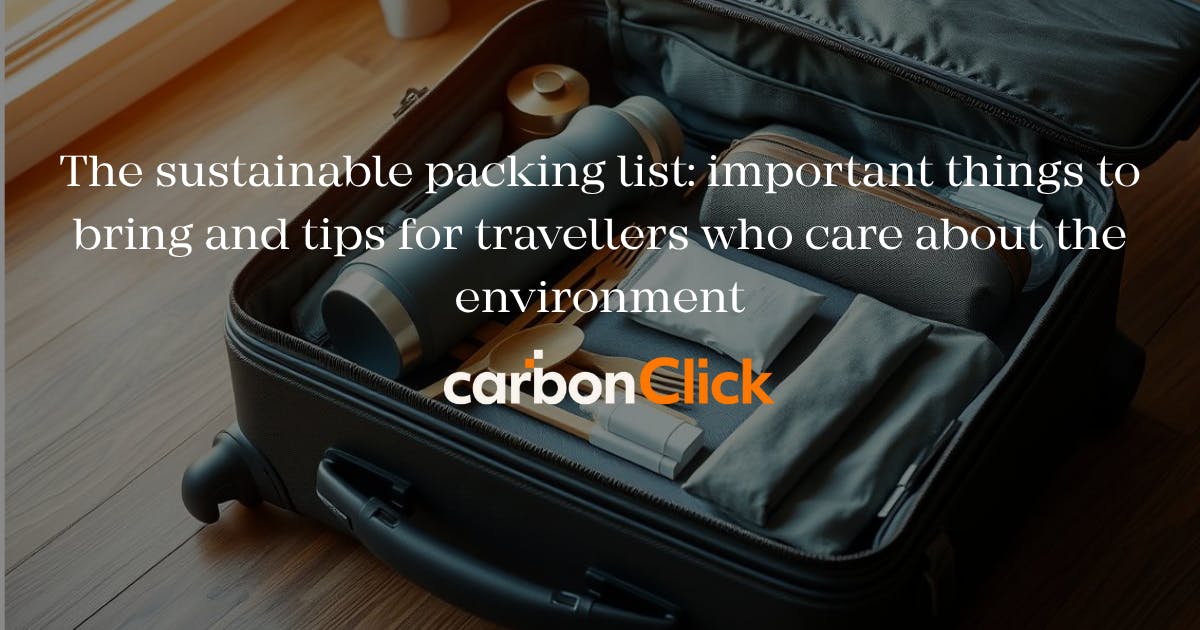
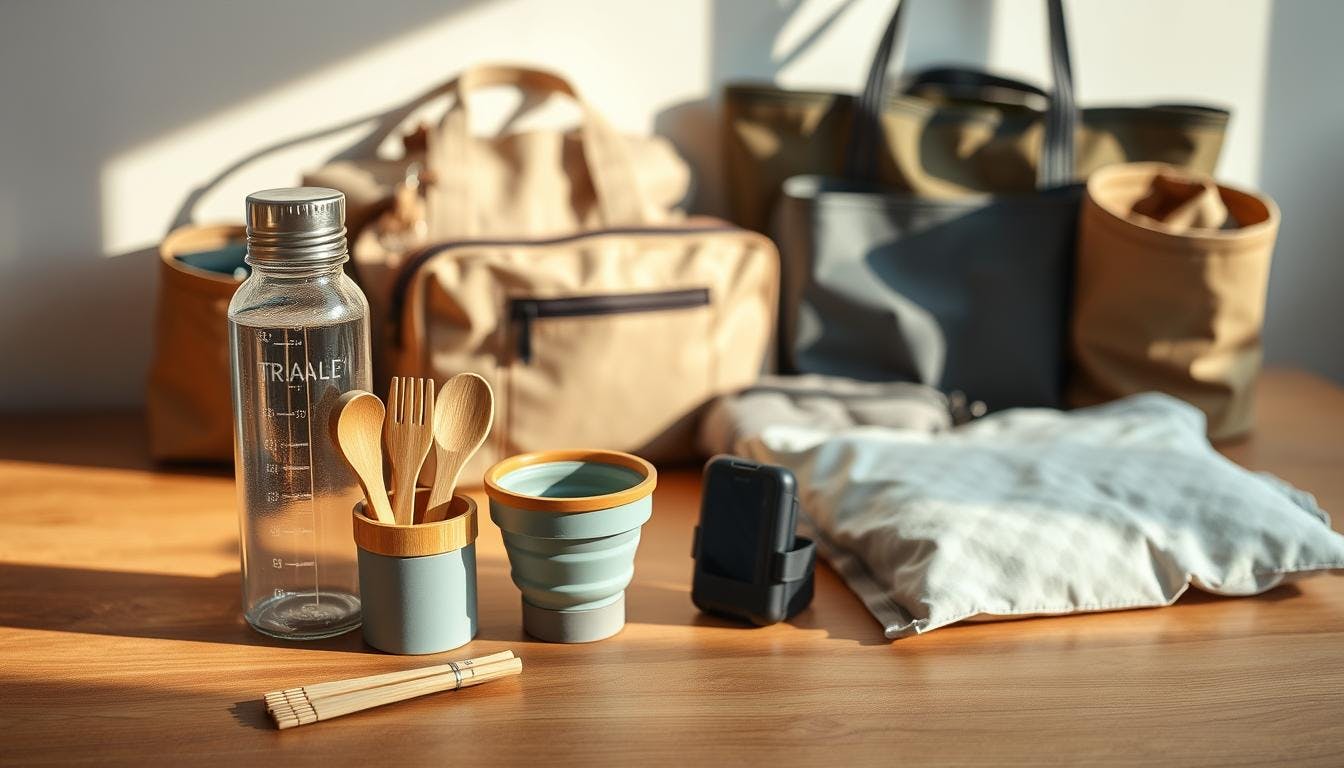
Why it’s important to pack light
Environmentally conscious travellers must pack light and sustainably, driven by climate change and environmental concerns, not just trends. Simplifying packing can significantly benefit the environment.
The effect of travel on the environment
Travelling, particularly flying, generates substantial carbon emissions. A 2,500-mile round-trip flight across the United States emits 1.5 metric tonnes of carbon per passenger, underscoring the need for conscientious travel. Packing light reduces fuel consumption, lowering emissions.
Advantages of packing light
Packing light offers multiple benefits beyond environmental impact, including fuel savings for airlines, potentially reducing travel costs, and simplifying baggage handling, which may lower repair and maintenance expenses.
Why your choices matter
Packing decisions extend beyond personal impact. Choosing verdant, sustainably produced items supports fair trade and corporate social responsibility. Reusing items and avoiding single-use plastics significantly reduce waste, collectively fostering positive change. Verdant packing aligns with responsible travel, prioritizing sustainable materials and production methods, allowing travellers to enjoy trips while protecting the planet.
Essential verdant gear for your travels
Selecting the right gear is crucial for travellers aiming to make a difference, as choices significantly impact the environment.
Luggage options that are good for the environment
Choose luggage made from recycled or durable materials, such as vegan leather from cork or pineapple leaves, over traditional leather. Prioritize brands emphasizing responsible sourcing and traceability. Such luggage reduces waste and supports ideal production. Assess durability to minimize frequent replacements.
Toiletries and containers that can be used more than once
Using reusable toiletries and containers is another sustainable travel strategy. Opt for refillable or biodegradable toiletry containers and sustainable storage for toiletries, clothes, and essentials.
- Refillable toiletry containers
- Biodegradable soap and shampoo
- Cloth storage bags
Choosing clothes that are good for the environment
Clothing choices impact sustainability. Select items made from verdant materials like organic cotton, recycled polyester, or plant-based fabrics. Choose versatile clothing to reduce luggage needs.
Careful gear selection minimizes environmental impact, making sustainability a priority for responsible travellers.
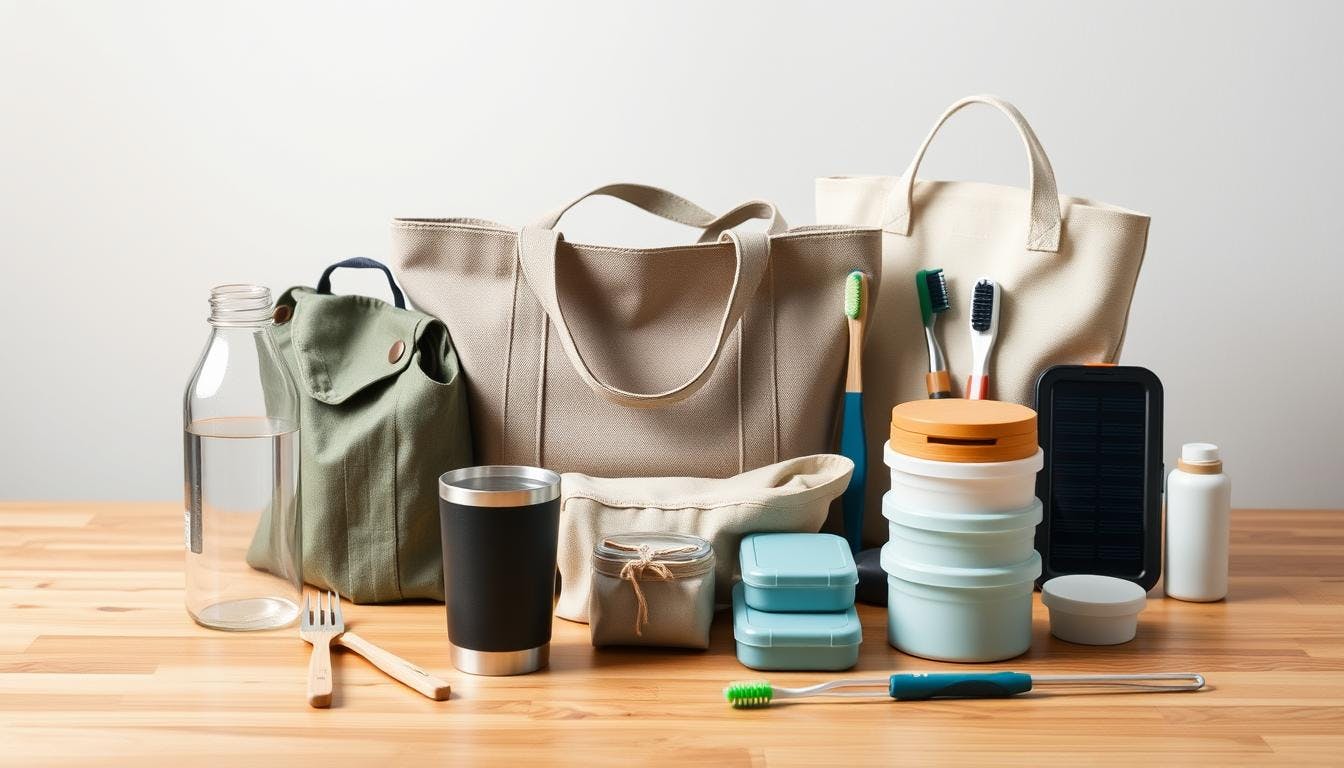
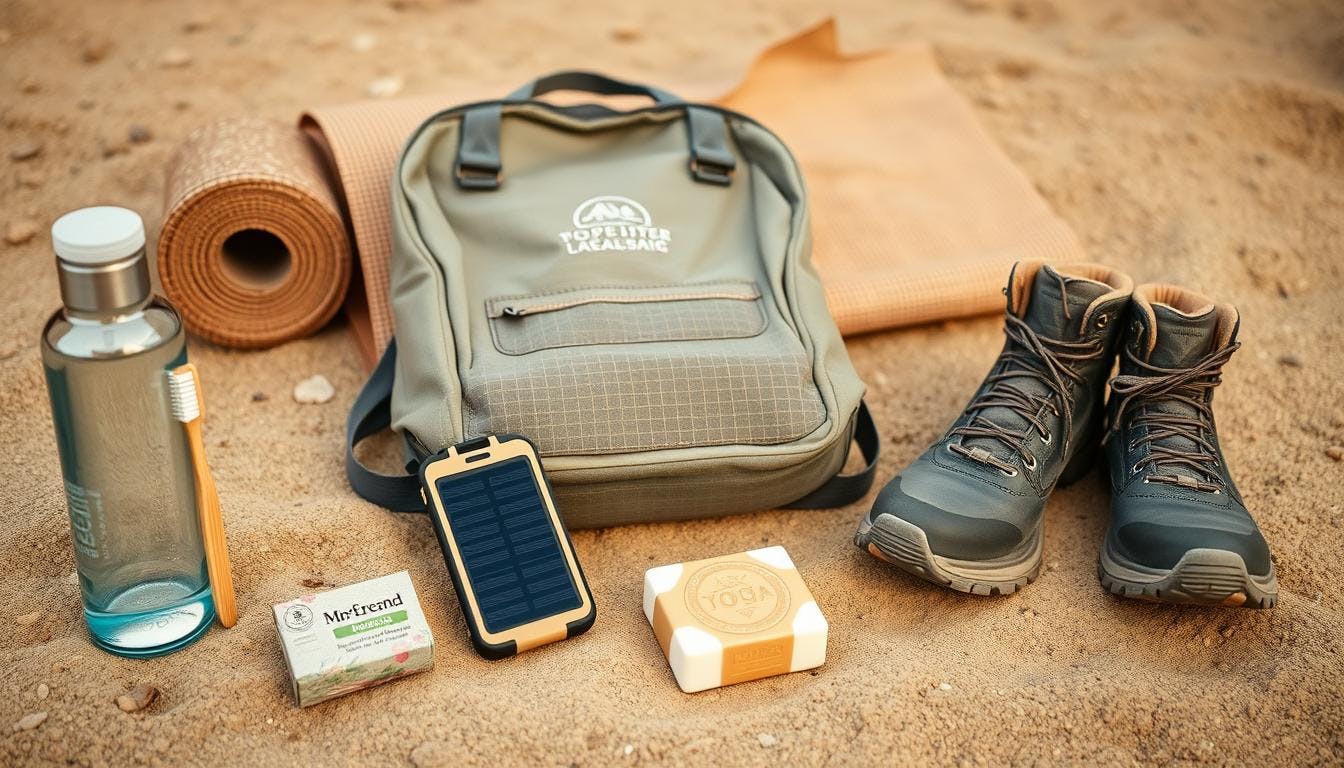
Tips for choosing the right gear
Selecting verdant gear requires considering brand environmental practices, clothing versatility, and gear quality.
Looking into brands that are good for the environment
Seek brands transparent about their environmental efforts, like Patagonia and Cotopaxi, which prioritize verdant materials and policies.
- Check for certifications like Oeko-Tex or Bluesign to ensure high social and environmental standards
- Review brand reports and initiatives for sustainable commitment
- Verify supply chain management for environmentally compatible practices
Clothes that can be worn for many different things
Versatile clothing reduces gear needs, lightening luggage and minimizing environmental impact during production and transport.
Putting quality ahead of quantity
Prioritize quality over quantity for verdant gear. High-quality items last longer, reducing waste despite higher initial costs.
- Durability: Assess construction and materials for travel resilience
- Functionality: Choose multi-purpose items with enhanced utility
- Sustainability: Opt for gear made from environmentally compatible materials or methods
Packing tips for minimalism
Effective packing habits are the foundation of verdant travel, benefiting both the environment and travel convenience.
Rolling clothes to save space
Rolling clothes saves space and prevents wrinkles, ideal for travellers.
- Roll clothes tightly to maximize space
- Use packing cubes to organize rolled clothes
- Place heavier items at the suitcase’s bottom
Layering for flexibility
Layering allows the same outfit to suit various climates and activities, using mix-and-match, versatile items. Simply follow the process below:
- Pack lightweight, multi-purpose clothing
- Choose items wearable in multiple styles
- Tailor packing to planned activities
How to use packing cubes to stay organised
Packing cubes enhance efficiency, organizing luggage for easy access and compact packing, reducing waste.
- Select packing cubes made from environmentally compatible materials
- Choose brands adhering to ideal sourcing
- Consider durability and quality of packing cubes
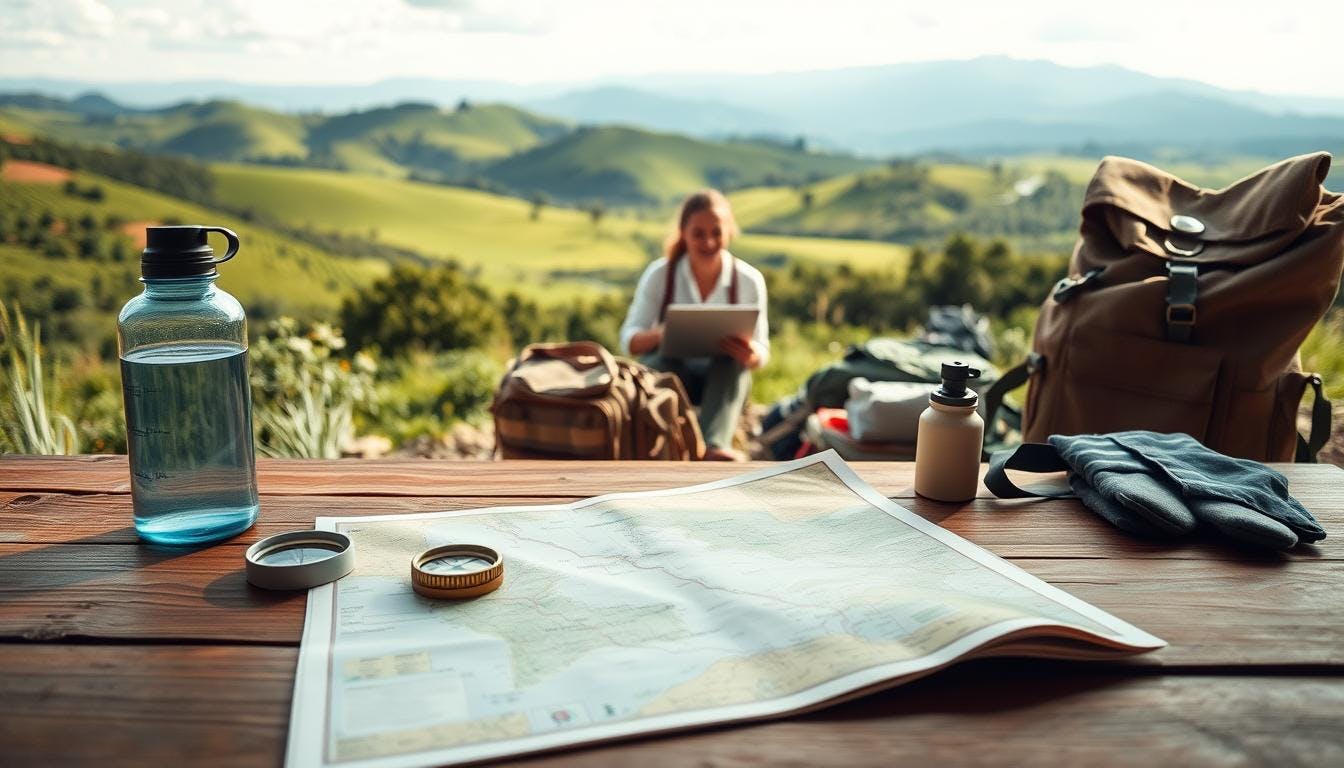
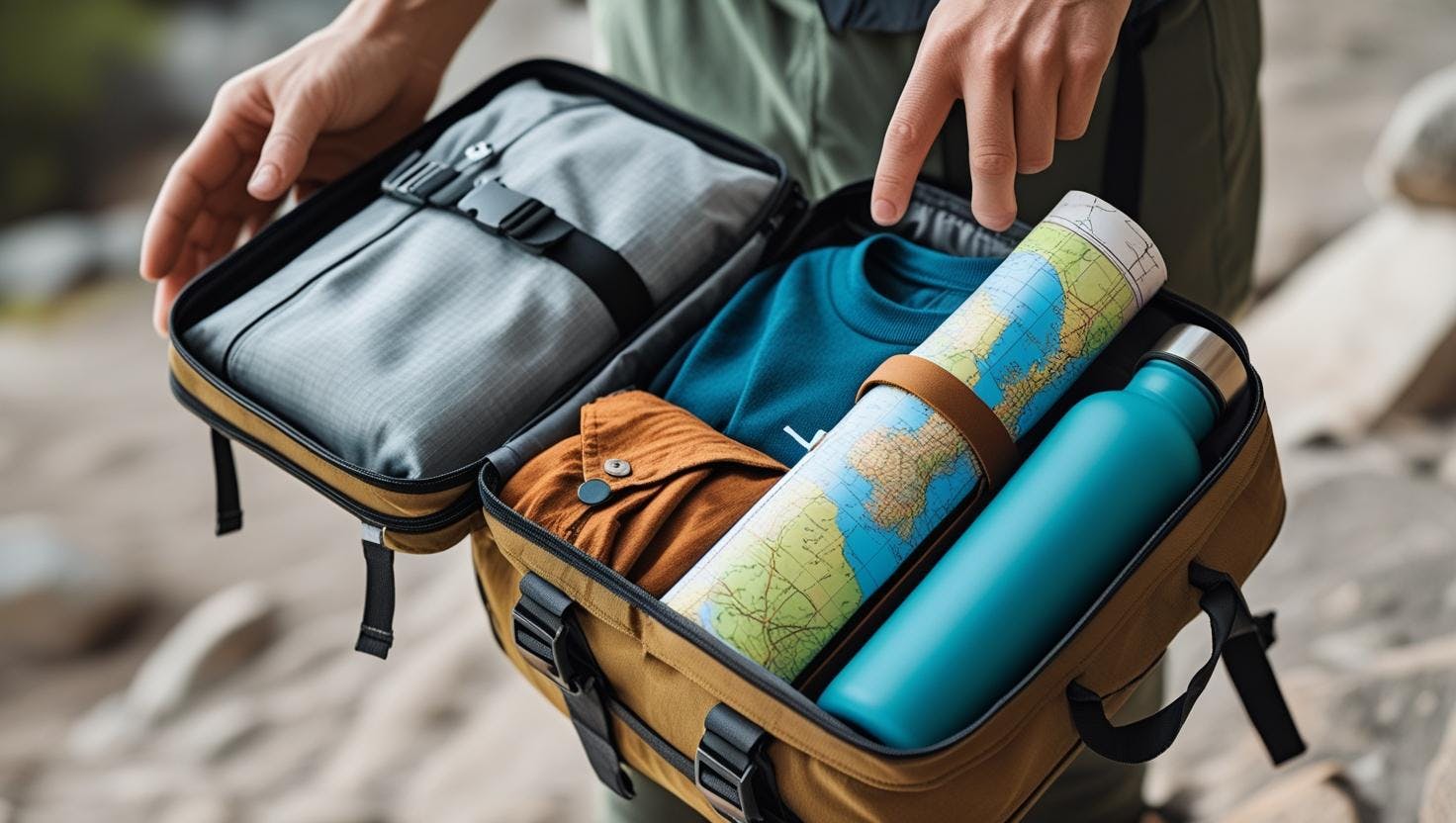
Things you need that can be used more than once
Choosing multi-use items is key to sustainable travel, reducing environmental impact while ensuring functionality and comfort.
Clothes that can be used for more than one thing
Versatile clothing, like the Patagonia Capilene Cool Lightweight Shirt, suits various activities, reducing clothing needs and environmental impact. These items often feature quick-drying, breathable, and moisture-wicking properties, ideal for hiking or urban exploration.
Accessories with two uses
Multi-purpose accessories, like a scarf doubling as a blanket or a travel belt with a hidden pocket, enhance functionality. Choosing sustainable, transparent brands reflects a commitment to environmental protection.
A well-lit still life features verdant travel gear on a wooden surface. A reusable water bottle, collapsible cup, and bamboo utensils are in the foreground, followed by a recycled-material toiletry bag and foldable tote in the middle. A travel organizer and reusable laundry bag sit in the background. Warm, natural light and soft shadows highlight textures, showcasing utility and sustainability.
Tech tools that don’t take up much room
Smartphones replace cameras, maps, and guides, while portable chargers eliminate multiple cables, streamlining packing for a sustainable, efficient travel experience.
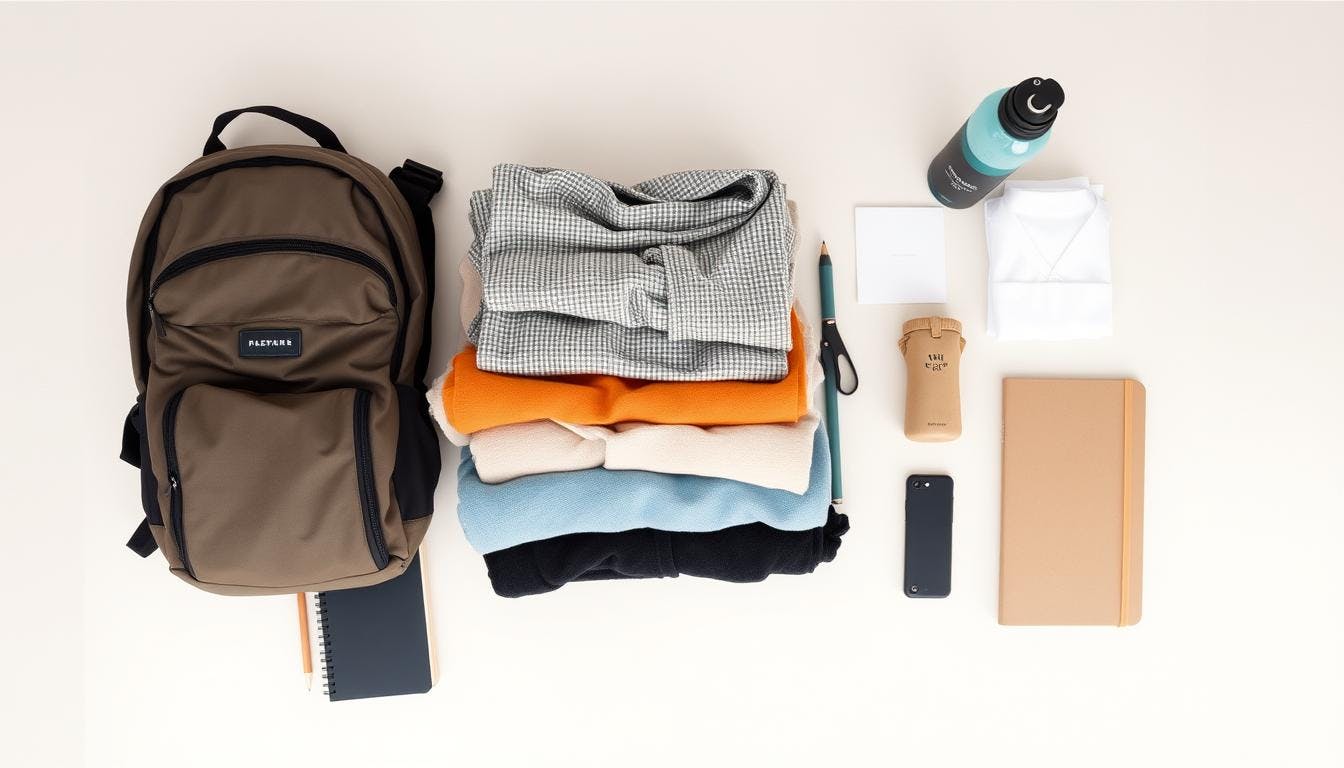
Sustainable options for common travel items
Travellers increasingly seek sustainable alternatives to reduce environmental impact, driven by growing awareness of travel’s ecological effects.
A well-lit still life displays conscientous travel items on a wooden surface. A reusable water bottle, bamboo cutlery, and travel mug are in the foreground, with a recycled canvas tote, foldable shopping bag, and silicone food containers in the middle. A solar charger, biodegradable toothbrush, and stainless steel straws are in the background. Soft, diffused light creates a warm, earthy ambiance, highlighting sustainable materials and thoughtful design.
Biodegradable toiletries
Biodegradable toiletries, made from natural, easily decomposable materials like toothpaste tablets and shampoo bars, reduce plastic waste. Choose products with clear labels and responsible certifications.
Travel utensils that aren’t plastic
Non-plastic utensils made from bamboo, stainless steel, or plant-based plastics are environmentally supportive alternatives to single-use plastics. Consider durability, recyclability, and the company’s transparency.
Water bottles that can be used again and again
Reusable water bottles made from stainless steel, glass, or BPA-free plastics reduce single-use plastic waste. Evaluate durability, ease of cleaning, and the company’s fair trade commitment.
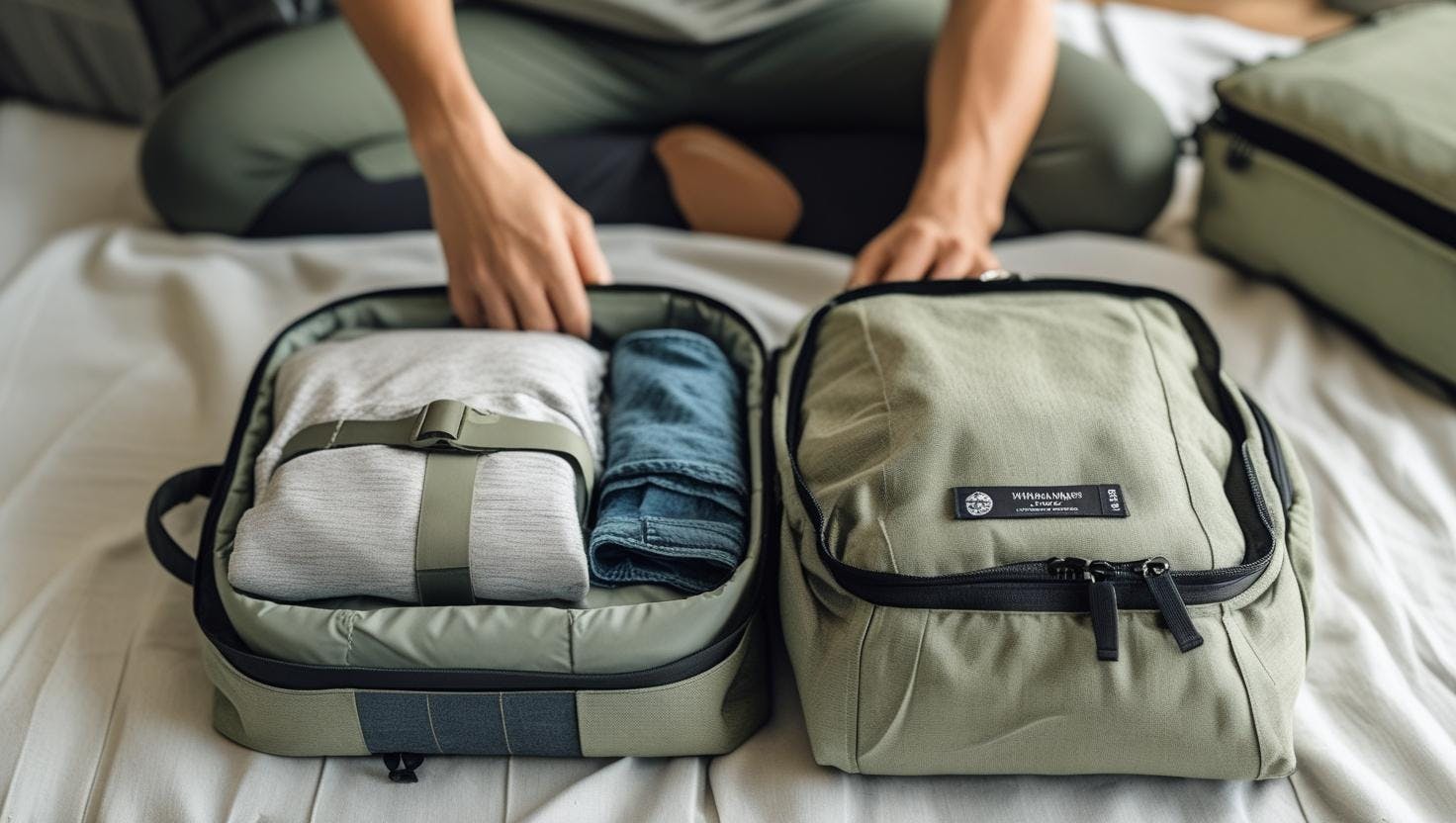
Making plans for your trip with the environment in mind
Trip planning significantly impacts the environment and local communities, necessitating sustainable considerations.
Eco-friendly places
Choose destinations that promote sustainable tourism with minimal environmental impact and preserve cultural heritage.
Green places to stay
Select accommodations using renewable energy, water conservation, and recycling programs to reduce environmental impact.
Helping local businesses
Supporting local businesses strengthens economies and enriches travel experiences through cultural immersion at family-run hotels, local restaurants, and markets, fostering sustainable tourism.

How to handle trash while travelling
Travellers can significantly reduce waste through mindful practices as environmental awareness grows.
Cutting down on waste at the source
Minimize waste from the start by:
- Avoiding single-use plastics
- Choosing reusable items like bags, water bottles, and containers
- Selecting low or biodegradable packaging
Properly getting rid of trash
Responsible waste disposal is essential when waste is unavoidable:
- Use designated recycling centers
- Participate in local waste management programs
- Avoid littering and store trash properly
Research local waste disposal practices before departure to ensure responsible handling.
Taking part in local clean-up efforts
Joining local clean-up efforts supports environmental preservation in visited destinations:
- Contribute to local environmental protection
- Raise awareness about environmental care
- Support visited communities
Managing waste and participating in clean-ups enhances travel experiences and benefits the environment.
Telling others about your verdant trip
Embarking on an sustainable trip offers opportunities to share experiences, inspiring others to adopt sustainable habits and highlighting sustainable travel’s benefits.
Writing down your journey
Sharing verdant travel experiences emphasizes transparency in tourism, showcasing fair trade and community involvement to motivate others.
Pushing for environmentally friendly practices
Advocate for sustainability by supporting sustainable businesses, choosing hotels and tour operators prioritizing environmental care to drive industry sustainability.
Encouraging others to travel safely
Sharing sustainable travel experiences inspires responsible travel, creating a ripple effect that promotes an environmentally conscious travel community and supports transparency for positive change.
17 South Street
Auckland 1010
New Zealand
info@carbonclick.com- -
- X
Subscribe now to stay up to date with CarbonClick, carbon offsetting and climate action.
By signing up you agree to our Privacy Policy.


